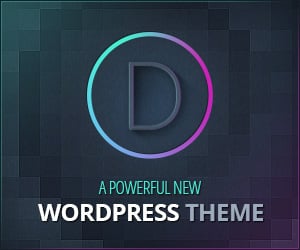SEO, the term which has been pivotal in deciding the profitability, success or failure of businesses, remains the top priority of digital marketers. Higher visibility equals to higher profits thus they leave no stone unturned in boosting their SEO ranking. Experts know that along with keeping an eagle watch on changing dynamics of SEO techniques a thorough check on the web design compatibility is a must to attain the target of top rankings.
We all know that the design of a website plays a crucial role in user engagement as well as search engine visibility; so much so that even some small shortcomings in your web design can render all your SEO efforts ineffective. In fact, a study by Tytom Media even revealed that 94% users reject a website if they do not find the web design compelling. Hence it’s inescapable to have a well-designed web page which matches the users’ expectations, and search engines’ algorithms, which ultimately create the web design trends. Although the trends of web design also change year by year, yet there are some basic things which one needs to check on in order to avoid deadly web design mistakes that can kill SEO, the major 6 are enlisted below:

Ineffective Responsiveness To Multi-Screens
Today the larger web traffic comes from handy devices like mobile phones, phablets, tablets, iPads etc. So having a “flawlessly responsive web design” is a must. Over 61% of users avoid a mobile site if they had any trouble loading it for the first time. In fact, Google came up with mobile-first indexing towards the end of 2016 and started demoting non-mobile-friendly websites. Responsive designs, especially mobile-first designs are the need of the hour. Mobile traffic is skyrocketing and an unresponsive design can kill all the SEO efforts. Whereas, a responsive design means lower bounce rates, increased user engagement, and more pages per visit, which definitely creates a positive impact on search ranking.
Flash/Splash As Homepage
Flash or splash homepages may seem to attract the humans but to search engines, it is nothing but a blank page. The web spiders cannot crawl through the flash or splash, which tells them that your page is nothing but a big advertisement. If you are using flash/splash pages, thinking that they are still attracting the audience then here’s a reality check- a recent poll by Growdigitally indicates that 78% of people are against flash/splash pages and even avoid using the sites that use them.
Complex And Lengthy Navigation
While designing a website for the users, make sure that you have not created a complicated web for the spiders. A simple and intuitive navigation is what humans, as well as search engines, are looking for. UX, with excessive drop-down menus, rotating homepage carousels, no navigation button or search bar and other non-standard navigation styles, is doomed to take your web page in the UX trash bin. A web design without the three-click rule navigation (getting any information on the website in less than 3 clicks) would not only frustrate the user but also lead to a lower ranking. A number of web service provider companies follow this rule while designing a website.
Too Many Elements
While design with simple content and no eye-catching element can bore the audience, a design with too many elements can easily baffle them. A time when ‘Less is More’ rules, having too many elements in your design would only add to the mess. Additionally, a web page with a number of fancy graphics and excessive widgets increases the page load time which, in turn, disengages the user. A study by Adobe, stating that 39% of users leave the website if they find the image load time to be too long, proves the same.
Beautifying The Web-Design At Cost Of Speed
Well, with changing trends you may need to redesign your website to match the trends but you are certainly killing all your SEO efforts if you have not prioritized the page speed while redesigning your site. In an age when a site with the loading time of just 2.4 seconds is also experiencing a 12.8% bounce rate, it won’t be wrong to say that a slow website design would just divert the user in a jiffy. Minimize the HTTP requests, optimize all the media used, enable compressions, reduce widgets and utilize caches to boost the speed of your site.
Abandoned 404 Page
An Error 404, page not found, is a big bummer for any website. However, not working on this 404 page can take away a number of visitors. Visitors typing wrong URL or a broken link may land on the error page. If the page does not provide any link to the web page, it may disengage the users, whereas a well-designed 404 page with internal links to most popular web pages can be a good approach to re-engage the unhappy visitor.
Web designing and SEO go hand in hand. A responsive design, quick page-loading, clutter-free pages, easy navigation, linked 404 pages and minimal use of flash/splash pages would not only make your website’s design more user-friendly and offer an intuitive user experience but also fetch higher rewards for your SEO efforts.
Anurag Gupta heads the content team for WeblinkIndia.net, a well-known website design & development company based out of India. He loves to write and share his views on the latest developments in the world of content marketing.












Add Comment